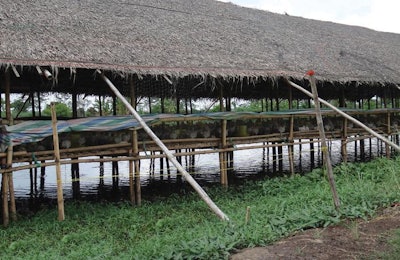
The poultry industry is in a particularly strong position to support sustainable development around the world, and is well positioned to work with the United Nations’ 15-year initiative, Sustainable Development Goals (SDGs).
The long-term aspiration of the SDG initiative is to promote the health, welfare and prosperity of the world’s population and to protect and sustain the earth and its natural resources. The poultry industry has the potential to influence most of the SDGs, however there are 5 key areas where the sector can have a particularly strong impact.
1. No poverty
The first and foremost SDG is to end poverty for all people everywhere.
Rural communities account for more than 70 percent of the world’s extreme poor. How can the poultry industry help here?
Growth in agriculture is at least twice as effective in reducing poverty for rural populations as for any other sector. Poultry production in developing countries helps extend opportunities for people to earn a living and become financially stable.
2. Zero hunger, good health and well-being
One of the industry’s key goals is to feed the world by providing a secure supply of quality poultry to customers around the world. Doing so will make a nutritious, affordable and sustainable protein source accessible by all.
3. Quality education
Agricultural extension enables farmers to access skills, tools and knowledge to thrive and increase their crop yields.
Many poultry genetics companies continually share best practice knowledge and advice with customers, partners and future poultry professionals through a variety of documentation, schools and other events around the world.
These educational opportunities are designed to help them achieve the best performance from their flocks and to help their businesses thrive. As a result, benefits extend to their local communities by improving their economic conditions and offering access to a healthy, reliable and affordable source of protein.
4. Climate action
Poultry has the smallest carbon footprint of any land-dwelling animal used in commercial agriculture.
Numerous studies have proven poultry production to be a very good steward of the earth’s natural resources, with a relatively low environmental burden when compared with other livestock.
For example, a recent article from Business Insider made the case that chicken produces the fewest greenhouse gas emissions during each phase of production, processing and cooking when compared with other popular types of meat.
5. Ecosystem management
Improving the efficiency of farmland can help meet the world’s growing demand for food, while minimizing the loss of natural habitats and forests.
Toward this goal, the poultry breeding industry has become a paragon of sustainability by producing birds that grow more efficiently by using less feed with each generation.
Feed conversion ratio (FCR) improvements in today’s broilers mean less feed grain is needed throughout the production cycle. The grain not used for poultry feed can be allocated for other purposes, and the land that would have produced grain can be used for natural conservation or repurposed for other crops.
FCR improvements also help reduce the environmental footprint of poultry production in terms of global warming potential and pollutant emissions.

Improvements in feed conversion have helped to reduce the need for inputs and the poultry industry’s environmental footprint. | Courtesy Aviagen
Aligning and forging ahead
UN Secretary-General Ban Ki-moon has described the SDGs as a “to-do list for people and planet” that laid out a “universal, integrated and transformative vision for a better world.”
The takeaway from the SDGs is that we must work each day to effect positive change in the world.
The poultry industry has an enormous responsibility. The global population is expected to reach 9 billion by 2050 and per capita food consumption will continue to grow. The response to this demand should be socially, economically and environmentally responsible.
Customers continue to be the most valuable asset, and should be continually equipped with the knowledge, products and technology for success in an increasingly competitive market.
Agriculture, and poultry especially, is poised to be a driver to make many of the SDGs possible. The greater poultry industry can investigate the UN goals and explore ways to align with them to improve global society. Working together toward these common goals, the poulry industry can accomplish great strides toward a better future for the industry, societies and the planet.
For more information on the Sustainable Development goals, visit:

















